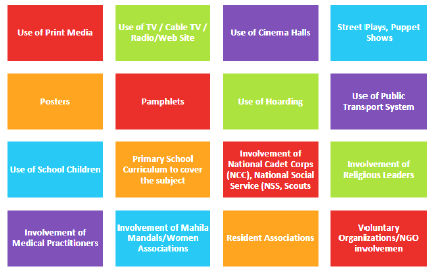Revolutionizing Waste Management: The Key Pillars of India's Cleanliness Revolution
- Suhani Sharma
- Jul 9, 2023
- 2 min read
Clean India Campaign
The Clean India Mission, while assessing the performance of ULBs through Swacchta Sarvekshan, rightly assigns over 50% weightage to solid waste management. Waste segregation at the source is the most cost-effective and easy-to-understand means of sustainable waste management. While it is essential to build the willingness of citizens and waste collectors for waste segregation, it is also necessary to enhance the capacities of urban local bodies (ULBs) to handle and process segregated waste effectively. Proper infrastructure, such as three dustbins in public spaces, and partitioned e-carts for waste collection and disposal systems, can influence and persuade people and build a social norm of cleanliness and waste segregation. Given our socio-cultural context, by creating the right incentive structure for the key stakeholders, ‘segregate as you generate’ can become the way of life.
Engaging Students
Sensitising school-going students can influence parents and society at large. While source segregation of waste should be mentioned in the curriculum, schools should also practically adopt three dustbin systems and maintain a compost pit. ‘Sustainability Leaders Program’ aims to collaborate with the ULBs, offering internships to high school students and creating ‘Sustainability Leaders’ as brand ambassadors of Swachh Bharat Campaign.

Solid Waste Management Rules, 2016
These rules set up under the agency of the Environment Protection Act 1986 stipulates that each Municipal authority should treat and dispose of the MSW generated by them in a manner so as not to cause damage to human health and environment. The Implementation of Municipal Solid Waste (MSW) Management is an important component of the Government of India's "Swachh Bharat Mission" to institutionalize a holistic Integrated, sustainable and eco-friendly MSWM in all the urban local bodies.
The rules require all waste generators to segregate and store the waste generated by them in three separate streams namely bio‐degradable, non-bio‐degradable and domestic hazardous wastes in suitable bins and handover the segregated wastes to the authorized rag‐pickers or waste collectors rather than throw, burn or burry the solid waste generated by them on streets or open public spaces outside his premises or in the drain or water bodies.


















Save water